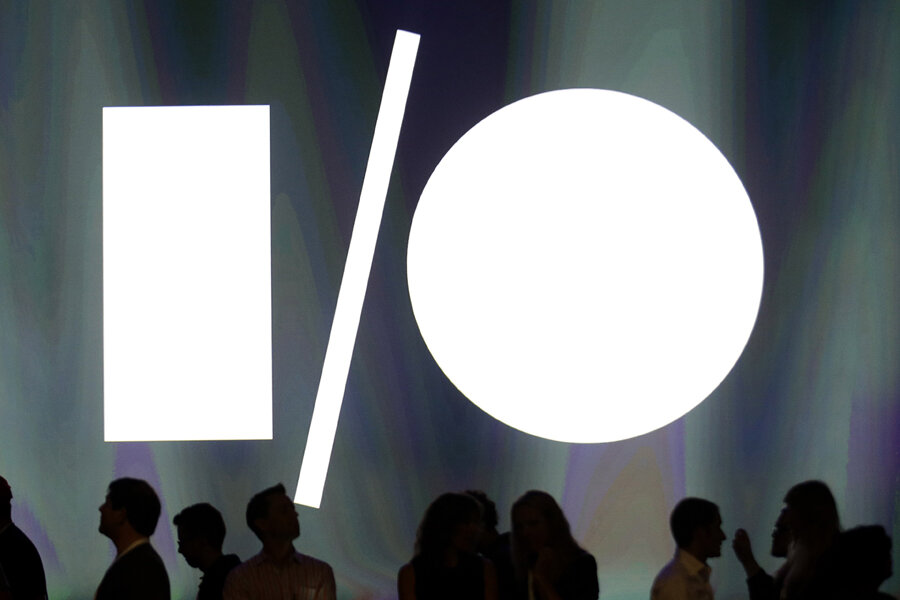Android in the car, on the wrist, and on the TV at annual Google I/O developer's conference
Loading...
Connectivity is something of a leitmotif in Silicon Valley these days.
That was the theme on display on Wednesday, the first day of Google's two-day annual software developer's conference, called Google I/O, held in San Francisco. In a series of keynote addresses, the search giant revealed plans for your television, your phone, your watch and, yes, even your car. That's right. It's called Android Auto and it will allow your smartphone to connect to your car, displaying your phone screen on a screen on your car's dashboard.
An update to the Android mobile operating system, Android L or Android 5.0, features a flatter, sleeker design with bolder, more vibrant colors. Coming on the heels of the debut of the Amazon Fire smartphone, which features a 3D display that allows for strong depth of field, the Android update will have 3D views that can cast real-time shadows. Moreover, the Chrome search engine, long popular for desktop users, is getting a design upgrade on Android mobile devices. The mobile search engine is taking advantage of "Material Design," which creates a speedier, more unified visual experience as they browse the web on their mobile devices.
Similar to updates announced by Apple at its annual Worldwide Developer's Conference in San Francisco earlier this month, Android users will now be able to answer text messages and respond to notifications from the phone's lock screen. Users can also double tap the notification to launch the corresponding application.
There's also a new feature to Android L called "Personal Unlocking," which allows the device to detect whether it's in a secure environment – for example, in its owner's hand. This announcement comes on the heels of new data affirming that smartphone kill switches lower theft and deter crime. Microsoft and Google announced last week that future phones running their operating systems would have kill switches. The Apple iPhone has come equipped with a kill switch since September 2013.
2014 also seems to be the year of the smartwatch, with Samsung releasing its Gear Live smartwatch and many speculating that Apple will release its own iWatch later this year. And Google did not disappoint on this front. Designed to work with smartwatch makers like Samsung, Android Wear, first unveiled earlier this year, is meant specifically for wearable devices, also known as "wearables." The Android-operated smartwatch lets users control it either via touch screen or voice command. You can, for example, tell your watch to remind you to do your laundry when you get home. It can in turn sync to your phone and notify you at the appropriate time. Using the Google Now personal assistant, the smartwatch can also give you important notifications based on your physical location, such as what time that train is arriving or what the weather will be like at the park for the day.
Then there's television. It's no secret Google has struggled to take over your living room screen – Google TV was almost universally agreed to be a failure. That being said, Google is now giving TV some serious tender love and care in the form of Android TV. Partnering with manufacturers like Sony, Sharp, and TP Vision, users can speak into a smartwatch to search for movies and TV shows. Android TV will also let users stream content to their TV screens from Android-supported devices like smartphones and tablets.
And don't think Chromecast was left out of the fun. Updates to the popular streaming device, that attaches to users' TVs, include the ability to connect external devices, like a smartphone, to the Chromecast without needing to be connected to the same Wi-Fi network. In addition, a feature called Backdrop will allow your TV screen to display images when users are not actually watching television, turning the normally blank screen (when it would be in the off mode) into a kind of rotating digital picture frame.
In recent months, Google has also made plays to move into the connected home market, notably in its acquisition of digital thermostat maker Nest Labs in January for $3.2 billion. More recently, Nest bought the smart home security start-up Dropcam for $555 million. And just this week, Nest announced the Nest Developer Program, allowing developers to make devices that, using the Nest thermostat as a hub, can communicate with each other. Although Google's foray into the home has caused some to raise privacy concerns – it does, after all, gather users' online information for targeted advertising – Nest insists that people using its products will not have their information turned over to Google for advertising purposes. Nevertheless, Google has revealed possible plans to begin advertising to consumers on household appliances, such as refrigerator surfaces.
At one point in the I/O conference, the speeches were interrupted by protesters, one of whom yelled that Google builds dangerous robots. The protesters were removed by security.
Of course, a developers conference wouldn't deserve its name without addressing developer concerns. As such, Google Cloud Platform will let software developers program more easily online without worrying too much about back-end development.
Updates were also announced for the Google-made laptop, the Chromebook, that will increasingly connect to users' Android-operated smartphone. For example, when users approach their Chromebook with their smartphone in hand, the Chromebook will automatically unlock and give users immediate access to their favorite services and applications. Competitor Apple released similar updates to its new iOS and Mac operating systems, demonstrating once again the connections tech companies seem to be striving for between their products of late.






